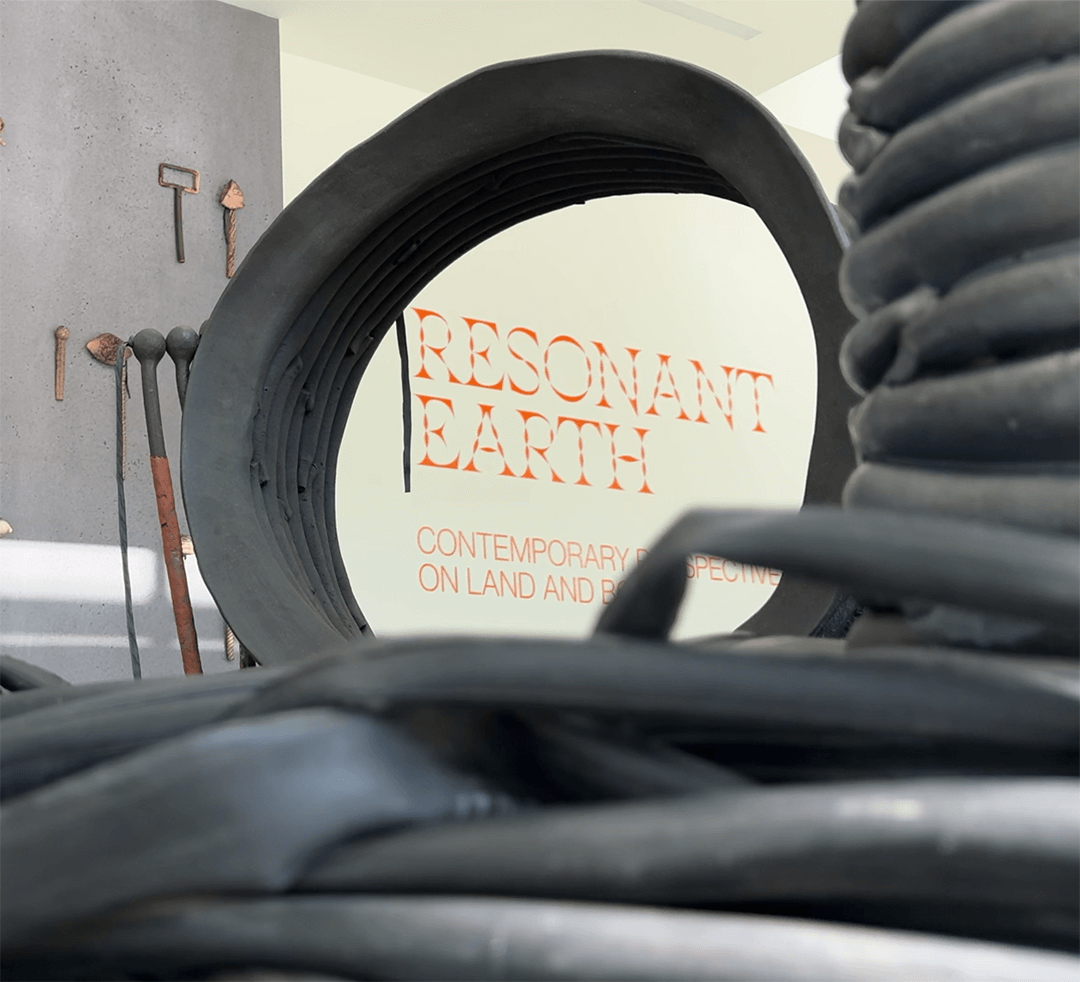Encouraging a deeper understanding of the complex histories embedded within specific ecosystems and the vital interdependencies between people and the planet, “Resonant Earth: Contemporary Perspectives on Land and Body” is a new exhibition at Rice University’s Moody Center for the Arts that challenges viewers to reevaluate their relationship with the land. It showcases the diverse practices of six contemporary artists — Kelly Akashi , Lisa Alvarado, Eddie Rodolfo Aparicio, Andrea Chung, Sky Hopinka and Anna Mayer — who illuminate the complex social, material and biological histories embedded within specific ecosystems.
“‘Resonant Earth’ is not just an art exhibition; it’s a powerful conversation starter,” said Alison Weaver, the Suzanne Deal Booth Executive Director of the Moody Center. “The artists here use their diverse practices to illuminate the profound connection between our bodies and the land we inhabit. We see this not just in idyllic landscapes but in the social and material histories embedded within specific ecosystems. From the forced displacement of people to the introduction of invasive species, these works challenge us to confront the complexities of our relationship with the Earth.”
Through a variety of media, including sculpture, painting, ceramics, collage, photography, video and sound, the exhibition explores a range of themes. Works such as suspended rubber casts of non-native trees in Los Angeles and bronze sculptures of weeds at former Japanese American internment camps in Arizona address the impact of human actions on the environment and the displacement of both people and plant life.
“Resonant Earth” goes beyond simply highlighting environmental concerns. The exhibition also celebrates the knowledge and cultural practices of Indigenous and diasporic communities, showcasing alternative modes of transformation and regeneration in relation to environmental and social justice struggles.
“In ‘Resonant Earth,’ we encounter a chorus of voices that celebrate Indigenous knowledge and cultural practices,” Weaver said. “These artists draw inspiration from their own heritages to envision ways we can transform and heal our relationship with the planet. The exhibition resists the myth of human separation from nature, showcasing instead a deep interconnectedness. As we confront environmental challenges and social injustices, these works offer us powerful tools for building awareness and fostering a more integrated future.”
Mayer, known for her use of ceramic and bronze in sculptures that critically examine our dependence on fossil fuels, created two site-specific installations using “gleaned clay” sourced from Houston and Marfa, Texas. These byproducts of flooding, drought and construction processes become the material for her works.
“My artwork often deals with land use,” Mayer said. “In Texas, that’s a very exciting subject. As I started learning more and more about ‘Resonant Earth’ and what the themes of it are, I realized it’s really perfect for my practice.”
Mayer’s installation “Working Past the Ocular (Does the Subsurface Need to be Spoken For?)” features pairs of ceramic sculptures mounted on a wall that depict drill bits and hammers alongside body parts and geological sediment. These “implements,” as Mayer called them, symbolize the tools we use to exploit the Earth, displayed against a backdrop of photographic wallpaper resembling damp cement, suggesting the ongoing impact of human actions.
In the entrance gallery, Mayer’s other installation, “Second Body,” features large-scale ceramic vessels nestled among black inner tubes coiled like intestines on top of existing furniture. This juxtaposition invites viewers to contemplate the connections between the human body and the Earth.
“So often table and chairs will be out in that entrance gallery as a place for people to sit and wait,” Mayer said. “I really wanted to install on existing furniture because I wanted to engage the viewer in a different way and have this conversation piece there that they might spend more time with.”
“Resonant Earth” is curated by former Moody assistant curator Molly Everett. It was made possible by the city of Houston through Houston Arts Alliance, the Brad and Leslie Bucher Artist Endowment, the Tamara de Kuffner Fund, the Kilgore Endowment Fund and the Sewall Endowment.
The exhibition is free and open to the public through Aug. 17. Click here for more information.

